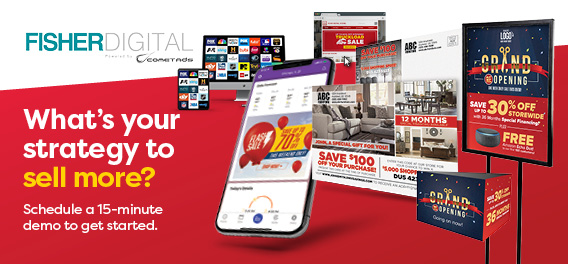Tune-Up Tips: Digital Marketing Edition
March 18, 2019(Editor’s note: This is part of a monthly series about tuning up different aspects of marketing activities.)
How can you leverage your digital marketing to do a better job reaching customers?
That’s an ongoing question that will take trial and error to figure out. In this article, we provide 3 tips to help improve your digital marketing. We opted to focus on 3 areas that could make a big difference if implemented into your marketing strategy. We also include a mini-dive into how prevalent digital marketing is.
Tune-Up Tip #1: Make Mobile Matter
A growing number of U.S. adults are using their smartphones for multiple online activities, making it more crucial than ever to consider mobile consumption when utilizing digital channels.
The We are Social report from Hootsuite examines digital trends. Unless otherwise noted, the below data is from this report.
Three in 4 members of the U.S. population are mobile Internet users. Mobile phones have a 41% share of all web traffic in the U.S., which is up 10% from 2017 to 2018. By comparison, tablets account for 8% of all U.S. web traffic, which is a 6% decrease from 2017 to 2018.
The most common weekly online activities on a smartphone include:
• 55% Using a search engine
• 52% Visiting a social network
• 40% Watching videos
• 31% Looking for product info
• 15% Playing games
Emails are opened more on mobile devices than desktop computers. 59% of all email opens happen on a mobile device.
Putting it Together: Mobile use means consumers have shorter attention spans, are (likely) looking for information on-the-go and are engaged in a variety of tasks. What does this mean for your online marketing activities?
• Keep your copy short, whether it’s an email, social media post or on your website
• Make product information easily accessible
• Collect analytics to see how much of your online traffic is coming from mobile
• Always test to see how your content looks on mobile devices
Tune-Up Tip #2: Consider Content Marketing
When leveraged effectively, content marketing educates customers, builds loyalty and trust and grows brand awareness.
“Content is the lifeblood of marketing activities across a whole host of touchpoints … from website and advertising copy through to email and social marketing activities. It is the fuel that drives digital experiences without which most businesses would eventually grind to a halt,” Econsultancy wrote in its Digital Intelligence Briefing-2018 Digital Trends report.
Content marketing was one of the top priorities marketers named in Altimeter Prophet’s The 2018 State of Digital Content report. The top objectives businesses are attempting to accomplish with their content marketing include:
• 32% Provide helpful information
• 24% Inspire trust & loyalty
• 18% Create brand awareness & generate positive feelings about the company
• 15% Position business as a thought leader & experts in subject matter
• 11% To be viewed as part of the same community as customers
In general, product-focuses content performs better than other types of content, including thought leadership, brand awareness and company/employee-focuses content, Altimeter Prophet found.
Where are companies putting their content? The top channels companies report that their content performs best on include:
• 50% Website
• 48% Facebook
• 35% Mobile App
• 29% Twitter
• 29% Email
• 27% Instagram
• 24% Online Forums
• 22% LinkedIn
• 15% Messaging Apps
• 11% Snapchat
• 10% Pinterest
• 2% Other
Putting it Together: Content marketing is a vital component of digital marketing. Leverage your digital channels to share content, particularly about your products. Make sure you are using consistent wordings and graphics across all your channels.
Tune-Up Tip #3: Push Out the Push Notifications
Push notifications remain a viable way to reach customers. Since they have already installed your company’s app on their smartphones, they are in a prime position to hear from you.
Push notification sends increased 300% from 2017 to 2018, which is a clear indication that they aren’t going away.
The average push notification opt-in rate has remained fairly flat in the past 4 years, according to Localytics’ State of Push Notifications 2018 findings.
The average opt-in rate was 52.3% in 2018 and 52% in 2014. Broadcast campaigns that push out the same mass notification to all have an average open rate of 2.36% while segmented campaigns have an average open rate of 2.84%, Localytics reported. And location-based messages were opened almost twice as often.
Push notifications are a way to keep users engaged with your app. After 90 days, 1 in 3 users who opted in to receive push notifications still use the app.
How many should you send? How often can you send a message that provides your users with value? There can be too much of a good thing—here are the estimated number of weekly pushes that caused people to stop using the app:
• 1 push/week: 6.1% stopped using the app
• 2-5 pushes/week: 22.3% stopped using the app
• 6-10 pushes/week: 31.3% stopped using the app
• 11-20 pushes/week: 21% stopped using the app
• 21+ pushes/week: 19.5% stopped using the app
Push notifications are short. Get to your value proposition quickly to keep your audience interested. Just because you have a maximum of 150 characters to use per push doesn’t mean you should use them all. According to mobile market platform CleverTap, the right message length depends on the vertical. Here are the ideal message lengths by vertical:
• Deals/Coupons: 20 characters
• Entertainment/Events: 90 characters
• Business/Finance: 55 characters
• Food/Delivery: 45 characters
• Retail/Commerce: 85 characters
The most effective push notifications contain one or more of the following: time-sensitive, money-saving deals or exclusive offers/content, according to CleverTap. Words like “awesome,” indulge” and “premium” can trigger impulse shopping.
CleverTap also found that including emojis in a push notification increase click-through rates by 70%. The best times of day to send push notifications are during the morning commute (7-8 a.m.) and during lunch breaks (10 a.m. to 2 p.m.).
Putting it Together: It’s not enough to have a mobile app. Leverage your push notifications to provide additional value, but be careful not to push your app audience to far with too many notifications.
Mini-Dive: The Prevalence of Digital
Digital’s reach is growing. It now influences 50% of in-store sales. Digital also accounted for half of all U.S. advertising sales in 2018, which the first time digital advertising was so prevalent.
Online channels are driving consumer interest and spending. For example, 37% of online shoppers use social media for inspiration. And 69% of consumers view marketing emails on a smartphone. Digital channels are ingrained in consumer behavior.
Digital channels account for almost a quarter of new product discovery. Consumers get first product awareness from the following channels:
• 39% TV
• 18% Online
• 10% In-Store
• 10% Press
• 6% Email
• 5% Direct Mail
• 4% Poster
• 4% Other
• 2% Radio
However, digital is not everything. 45% of the U.S. population uses digital ad-blocking tools to stop advertisements form being displayed. That’s why it’s important to remember that digital channels should be part of a larger, cross-channel coordinated marketing effort that encompasses both online and offline channels.
Editor’s note: This is another entry in our monthly Tune-Up Tips series. Look for our next Tune-Up Tips: App Edition on April 1, 2019.
Read the previous entries in our Tune-Up Series:
Tune-Up Tips: Social Media Edition
Image was designed by rawpixel.com / Freepik

